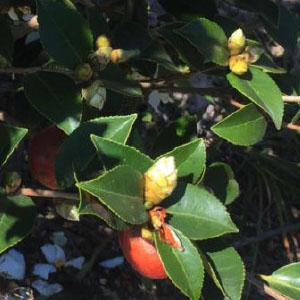Simulation study and field experiments on the optimal canopy shaking action for harvesting Camellia oleifera fruits

Published: 30 June 2022
Abstract Views: 789
PDF: 463
HTML: 28
HTML: 28
Publisher's note
All claims expressed in this article are solely those of the authors and do not necessarily represent those of their affiliated organizations, or those of the publisher, the editors and the reviewers. Any product that may be evaluated in this article or claim that may be made by its manufacturer is not guaranteed or endorsed by the publisher.
All claims expressed in this article are solely those of the authors and do not necessarily represent those of their affiliated organizations, or those of the publisher, the editors and the reviewers. Any product that may be evaluated in this article or claim that may be made by its manufacturer is not guaranteed or endorsed by the publisher.
Similar Articles
- Zhongwei Hua, Min Guan, Lightweight sandy vegetation object detection algorithm based on attention mechanism , Journal of Agricultural Engineering: Vol. 54 No. 1 (2023)
- Valentina Giovenzana, Roberto Beghi, Riccardo Guidetti, Massimiliano Luison, Tiziana Nardi, Evaluation of energy savings in white winemaking: impact of temperature management combined with specific yeasts choice on required heat dissipation during industrial-scale fermentation , Journal of Agricultural Engineering: Vol. 54 No. 3 (2023)
- L. Pari, V. Civitarese, A. Del Giudice, A. Scarfone, Two prototypes for medium rotation forestry harvesting , Journal of Agricultural Engineering: Vol. 44 No. s2 (2013): Proceedings of the 10th Conference of the Italian Society of Agricultural Engineering
- A. Assirelli, A. Acampora, S. Croce, R. Spinelli, E. Santangelo, L. Pari, Mechanized recovery of olive pruning residues: ash contamination and harvesting losses , Journal of Agricultural Engineering: Vol. 44 No. s2 (2013): Proceedings of the 10th Conference of the Italian Society of Agricultural Engineering
- Andrea De Montis, Amedeo Ganciu, Fabio Recanatesi, Antonio Ledda, Vittorio Serra, Mario Barra, Stefano De Montis, The scientific production of Italian agricultural engineers: a bibliometric network analysis concerning the scientific sector AGR/10 Rural buildings and agro-forestry territory , Journal of Agricultural Engineering: Vol. 48 No. s1 (2017): Special Issue
- Paolo Liberati, Paolo Zappavigna, Evaluation of solar energy on the roofs of livestock houses , Journal of Agricultural Engineering: Vol. 43 No. 4 (2012)
- Marco Togni, Alberto Cavalli, Davide Mannozzi, Chestnut: from coppice to structural timber. The case study of "Uso Fiume" beams sampled in Liguria , Journal of Agricultural Engineering: Vol. 44 No. s2 (2013): Proceedings of the 10th Conference of the Italian Society of Agricultural Engineering
- Angelo Fabbri, Chiara Cevoli, Giuseppe Cantalupo, A method for handlebars ballast calculation in order to reduce vibrations transmissibility in walk behind tractors , Journal of Agricultural Engineering: Vol. 48 No. 2 (2017)
- Nathalie Almaru Caraballo-Arias, Vito Ferro, Assessing, measuring and modelling erosion in calanchi areas: a review , Journal of Agricultural Engineering: Vol. 47 No. 4 (2016)
- Andrea Galli, Cosimo Peruzzi, Fabiola Gangi, Daniele Masseroni, ArduHydro: a low-cost device for water level measurement and monitoring , Journal of Agricultural Engineering: Vol. 55 No. 1 (2024)
<< < 15 16 17 18 19 20 21 22 23 24 > >>
You may also start an advanced similarity search for this article.

 https://doi.org/10.4081/jae.2022.1245
https://doi.org/10.4081/jae.2022.1245







